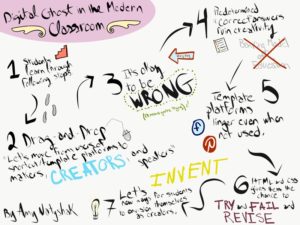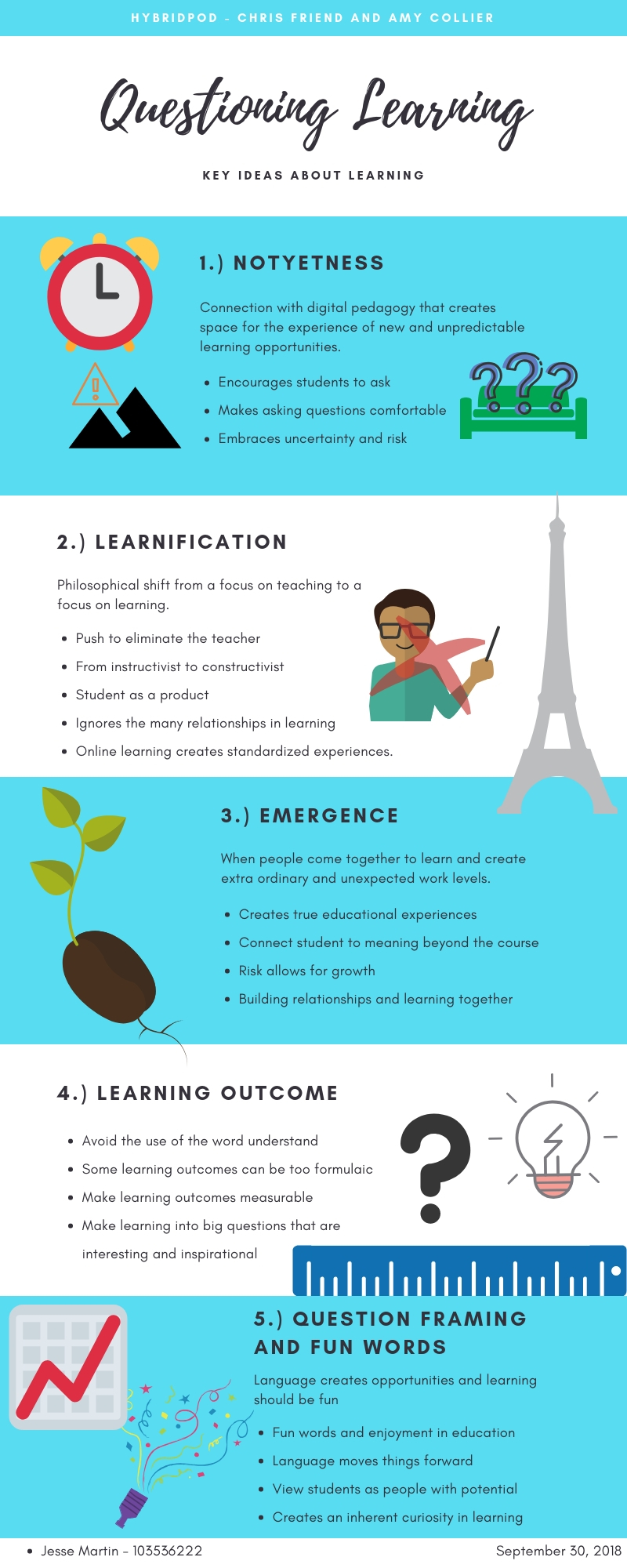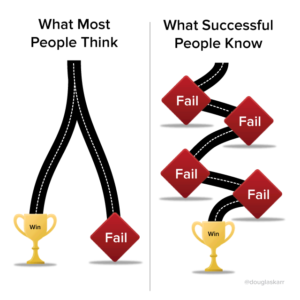Okay, maybe it’s not dead—but it’s definitely dying in the classroom setting.
According to Ashley Hinck in the article Digital Ghosts in the Modern Classroom, we must use technology to allow students to create without setting one clear end result. Below you will find a sketchnote I made on Adobe Draw on my iPad Pro which summarizes all of the key points that I found important in the article.
In my creation process, I became frustrated multiple times. The fear of failure crept up multiple times and I realized that I needed to get over the need for perfection and just allow my work to be seen. This is pretty ironic because the article makes it seem that having no standardized steps allows freedom. This allowed me too much freedom because I was at a loss of where to begin. Although my sketchnote is not perfect, I had to choose a point to stop fixing and changing it. The more I tried to fix it, the more I ended up disliking it. Looking at it now, I am proud of what I created, but I am definitely not excited to use this method again anytime soon.
I found this article quite interesting. I agree that we should encourage students to enjoy the process of trial and error, and I hope to integrate this message into my teaching. The author outlined that it is important to encourage students to create without following systematic steps, but I believe we can take this outside of digital technologies as well. In my future classroom, I want students to take initiative and create their own steps (when appropriate) as opposed to following ones that I outline. I want this to occur occasionally in hands-on experiences and written assignments too. As a teacher, I am not yet equipped to teach how to use non-template driven sites. I would be unable to facilitate these lessons which is why I would begin with other projects before delving into technology. Each student should take responsibility for their learning (with a teacher’s assistance of course), and this article is a step in that direction. Although creating projects from scratch without a template can be time consuming, it is important for students to explore and create their own final products. No two projects created from scratch should look alike.
I hope to challenge my students while initiating recreation from the SAMR Model. I want them to be able to create their own work, something that has never been done, and to be proud of it. I believe this article gives us a great idea of how to do this, but we must adapt it in order to have it fit our own classroom needs!
Although I may have lied about the death of drag-and-drop technology, we must admit that it is aging and that we have the affordances to let our students be creators, not just users.
– Amy N



